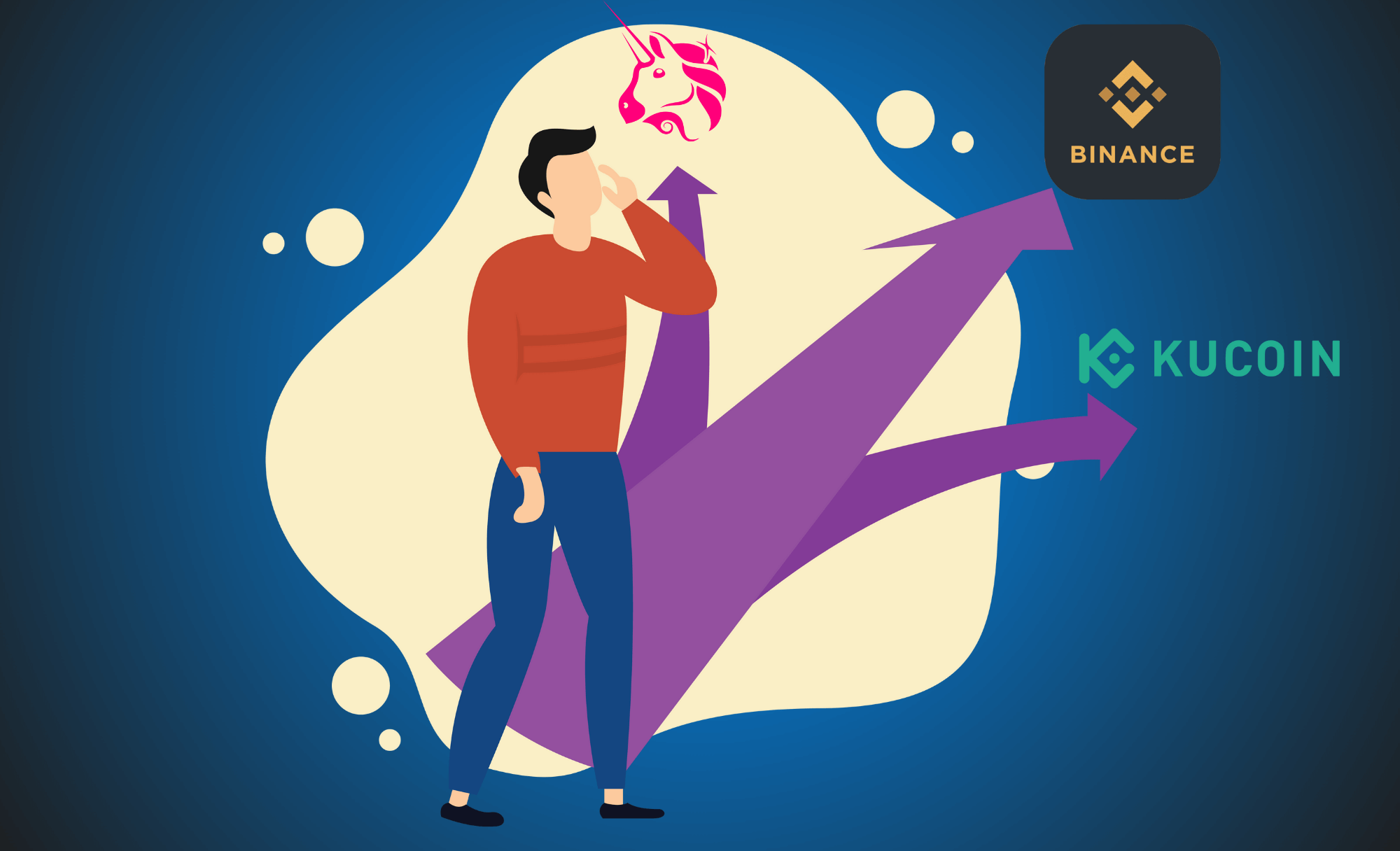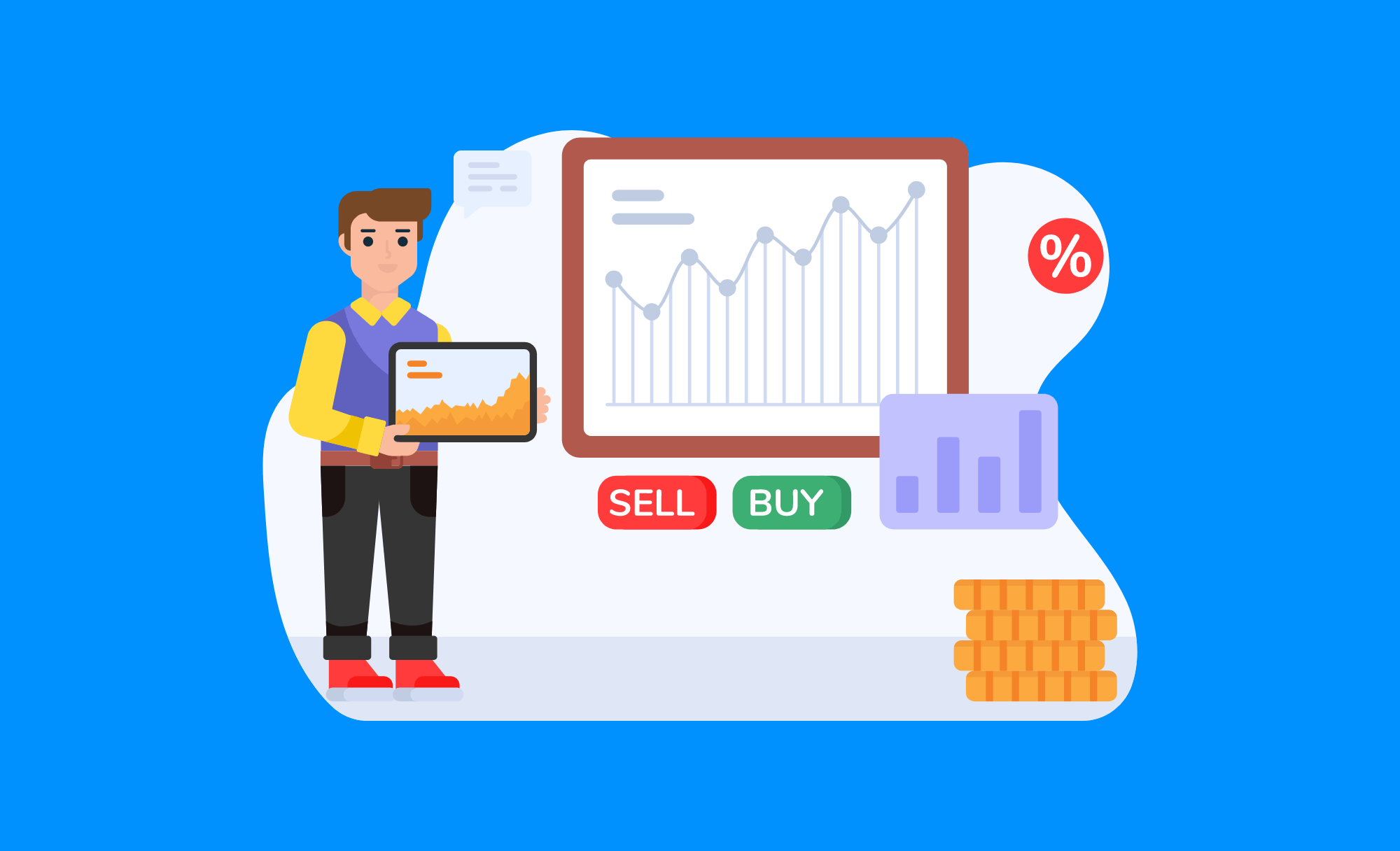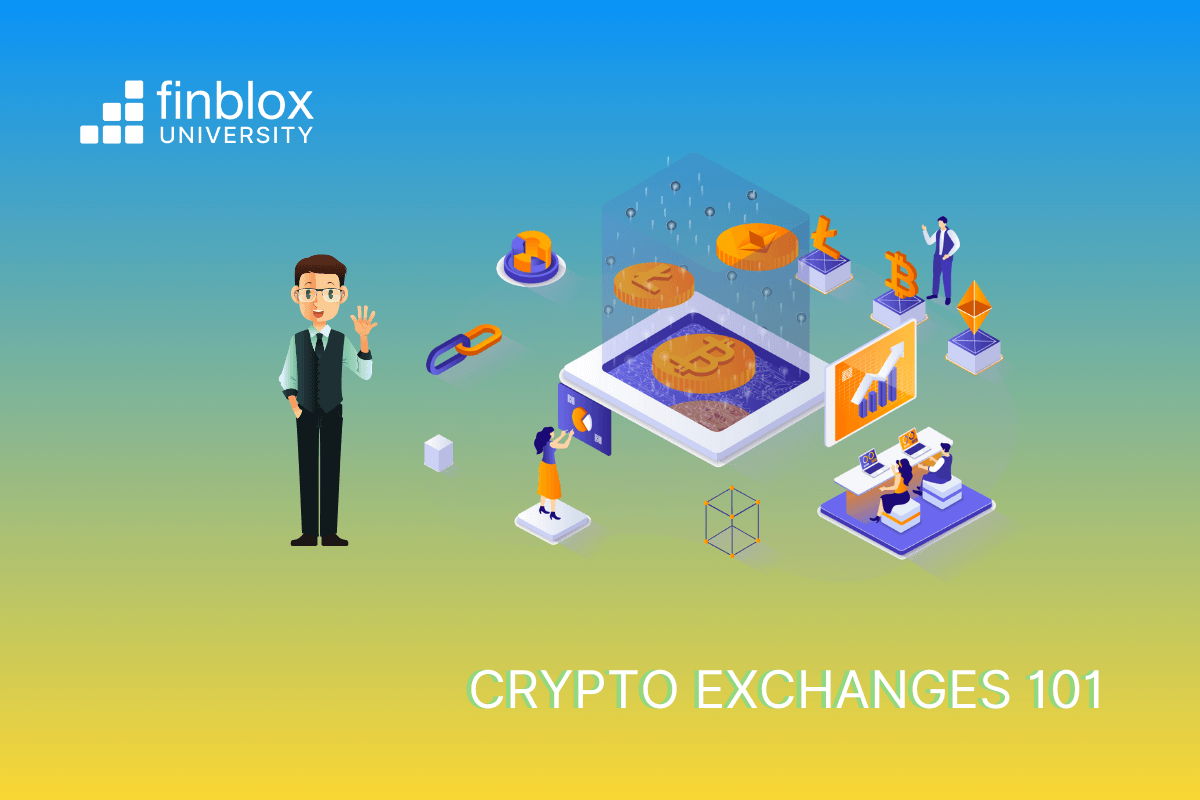Learn about centralized and decentralized exchanges, their functions, and how to choose the best one for you!
A cryptocurrency exchange is an online marketplace where users can buy, sell, deposit, withdraw, and sometimes swap crypto. They function and appear nearly identical to stock exchanges - so chances are if you're already an experienced stock trader, you'll adapt to using a crypto exchange in no time!
There are two main types of crypto exchanges - centralized and decentralized exchanges.
Centralized exchanges (CEX):
- Managed and run by a single entity or corporation
- Highly-regulated and frequently subjected to legislative scrutiny
- Great UX/UI interface and offers customer support
- High trading volume that helps improve liquidity
- Holds custody of your assets until they are transferred off-platform
- Allows you to directly purchase crypto with fiat money
- Requires Know-Your-Customer (KYC) process by law. KYC usually involves photo identification, followed by proof of residence - this is done to prevent identity fraud, money laundering, and other illicit activities
- Conducts trades using an order book, which is an electronic list of buy and sell orders
Decentralized exchanges (DEX):
- Governed by smart contracts that execute transactions - otherwise human intervention-free
- Unfortunately, lack of intervention usually means poorer design and zero customer support
- Difficult to regulate and therefore popular with persons from countries where crypto/centralized exchanges are banned, as well as criminals
- Lower trading volume
- You hold custody of your assets in a wallet which needs to be connected to the DEX, and assume responsibility for all losses
- Doesn't support the direct purchase of crypto using fiat money - you can only purchase crypto with other cryptos in your wallet
- Token swaps are the crowning feature of DEXs, and allow you to directly trade one crypto for the equivalent amount of another instead of converting it to a supported trading pair first. We'll talk more about this later!
- Conducts trades using liquidity pools, which are basically giant piles of assets that are contributed by users for the purpose of creating a market. Because DEXs cannot use a centralized order book to pair a buyer and a seller - it instead offers buyers/sellers pricing for a crypto based on how much is available in the liquidity pool. You are conducting transactions through a smart contract with the liquidity pool - hence these types of exchanges are known as peer-to-contract.

How do I choose the right exchange for me?
The first thing you'll want to look at when choosing an exchange is whether or not that exchange is legally allowed to operate in your country, and onboard users from your country. For example, Binance is outlawed in the UK, China, and Singapore because it does not have the appropriate licenses. If you have no supported exchanges in your country - you might want to consider using a decentralized exchange.
Secondly, you'll want to look at the trading volume of that exchange - how much money is being transacted every day on average. Why is this important? High liquidity ensures that you will be able to get in or out of a position quickly, due to the constant availability of buyers and sellers. You don't want to be stuck holding your assets in the event of a sudden market downturn!
Next, you'll want to examine what types of cryptos are offered on that exchange. Everyone has their favorites, and not all cryptos are supported on every platform. Most people sign up for multiple exchanges to compensate for this. However, a general rule of thumb is that you want to have as many of your desired cryptos on an exchange as you can - because it costs money to transfer assets between different exchanges. Be aware that some exchanges selectively support crypto sales to users of some countries, while banning the sale of said crypto to users of restricted countries. Always check what you are buying in compliance with local laws!
Finally, try and compare the fees between exchanges. Most exchanges now operate via a tiered maker-and-taker scheme, where buyers (takers) and sellers (makers) pay lower transaction fees if they are doing higher total volumes of trading in a set time period. This fee is usually a small percentage of the transaction ranging from 0.1% - 0.5%. Structuring the fee in this way encourages higher trading volume and market liquidity. Some exchanges still charge a per-transaction fee on an individual basis, but are dwindling in number.
Decentralized exchange fees work a little differently - they also have maker-and-taker fees, but gas fees as well. Gas is what you pay when you want to move an asset from the DEX into your crypto wallet, and it can be exorbitantly expensive depending on how many users are trying to access the blockchain. If you recall, proof-of-work miners choose which transactions go through based on supply and demand - and may decide to ignore users who are offering lower fees than others. When demand exceeds supply, users will raise their gas limit to have the best chance of executing the transaction - but this drives competition and gas prices up across the board.

What functions can I execute on a centralized exchange?
Buying:
- All buying is done in currency pairs. This means you are exchanging one type of currency for the equivalent value in crypto. Since there are multiple types of currencies you can exchange, be sure to select the correct currency pair viewing! The most common currency pairings are with USD (or your government's fiat currency), USDC, USDT, BTC, and ETH.
- A buy market order is as simple as entering the amount of crypto you want to want to purchase - either in tokens (same as shares) or a currency amount. The calculator will automatically show you how much you would have to pay for those shares, or how many shares you would receive for an entered amount. There are also percentage sliders to help you accurate allocate the funds in your account. When you execute a buy market order, it purchases the full amount of that crypto for the instant price(s) that it is available at.
- You can see the price that sellers are offering it for in the order book. Remember that you are competing with other buyers for these prices, and they may have placed their order before you.
- Sometimes, you might end up purchasing crypto at slightly different token prices - a concept known as slippage. This happens when your order is bigger than what one seller can provide - and your order begins to buy from another seller, who has a slightly different price.
- A buy-limit order is another popular type of order. Unlike a market order, you set the exact price that you wish to buy this crypto at (the limit) - and it will only purchase at that price when it is available. This eliminates the possibility of slippage.
- However, the problem with buy-limit orders is that they may never trigger. If you set the limit below the current price, but the price just keeps going up - you'll never activate your order.
- Another problem is partial-execution. You might get some of your order filled at that price, but the price goes up/down again and invalidates the rest of your order from being completed.
Selling:
- All selling is also done in currency pairs. The currencies that you can convert your sold crypto into are alot more restrictive. The logic behind this is that you either plan to withdraw that currency and convert it into fiat money (to spend), or to transfer it to your wallet/a different exchange. For this reason, most selling currency pairs are with stablecoins that A) hold their value extremely well and B) are supported on nearly all exchanges.
- You can convert your crypto into a fiat currency like USD, but this would trigger a taxable-event. Stablecoins are the solution - they hold the same value as USD, but can be transferred from exchange to exchange without triggering a taxable-event. Many users like to hold their funds in crypto for a long time to let them appreciate, and still have the flexibility to trade their cryptos for better-performing projects without taking their money off the exchange (which is taxable).
- A sell market order works in the same way as a buy market order - it's instant, and gives you whatever price is available. Keep in mind you might get lower prices if everyone is selling due to slippage.
- A sell-limit order is one of the most popular ways to protect your assets - also known as a stop-loss order. It can also help you take your profits at a certain level. Setting the limit below the current price will sell your crypto once it reaches that limit, reducing your potential for greater losses. Setting the limit above the current price will sell your crypto once it reaches that height, taking your profits before the price potentially goes down again.
Depositing:
- You will need to deposit fiat money into your exchange account before you can purchase cryptos. Most exchanges will allow you to do this via bank transfer, or buying with debit/credit.
- You can also transfer your existing crypto funds from another source into your exchange wallet, using the correct address and network. We'll cover some of the more technical details on this in the next article.
Withdrawing:
- You can withdraw fiat money to your bank account, once it has been converted from crypto into the correct form.
- You can also withdraw crypto from your exchange account and send it to a private wallet, or another exchange. This is also done with addresses and networks.
There are additional functions, but we do not cover leverage or derivatives trading in this article. Though the returns may be outstanding, these are highly risky instruments that directly conflict with the values of Finblox - which is to provide stable but high-yield returns through our crypto savings platform.

What about decentralized exchange functions?
Buying and selling work the same way on decentralized exchanges, except the process is called a swap. Unfortunately, there are no limit order features on DEXs that would allow users to set conditions on the price of the trade. Instead, users are able to set a tolerable slippage amount and the gas limit (similar to a bid).
Since DEXs use liquidity pools and smart contracts that execute automatically, users are at the mercy of supply and demand, and sometimes experience extreme slippage and high gas fees. All currency pairs are crypto-to-crypto, meaning you cannot use fiat money on a DEX. This also applies to deposits and withdrawals.
One unique function of a DEX is that users can contribute their assets towards a liquidity pool, which allows them to earn a percentage of transaction fees in that pool.
The Takeaway:
Ultimately, centralized exchanges are much easier and safer to use for the non-sophisticated investor - providing high liquidity, near-instantaneous transactions, customer support, and predictable fees. However, decentralized exchanges also have their share of merits: accessibility in any jurisdiction, greater flexibility in currency trading pairs, and virtually limitless access to smaller crypto projects that are not listed on the major exchanges.
Thanks for reading! Please subscribe if you haven't already - and stay tuned for our next article on everything you need to know about transactions!
This content is provided for informational purposes only, and should not be relied upon as legal, business, investment, or tax advice. You should consult your own advisers as to those matters. Charts, graphs and references to any digital assets are for informational and illustrative purposes only.



